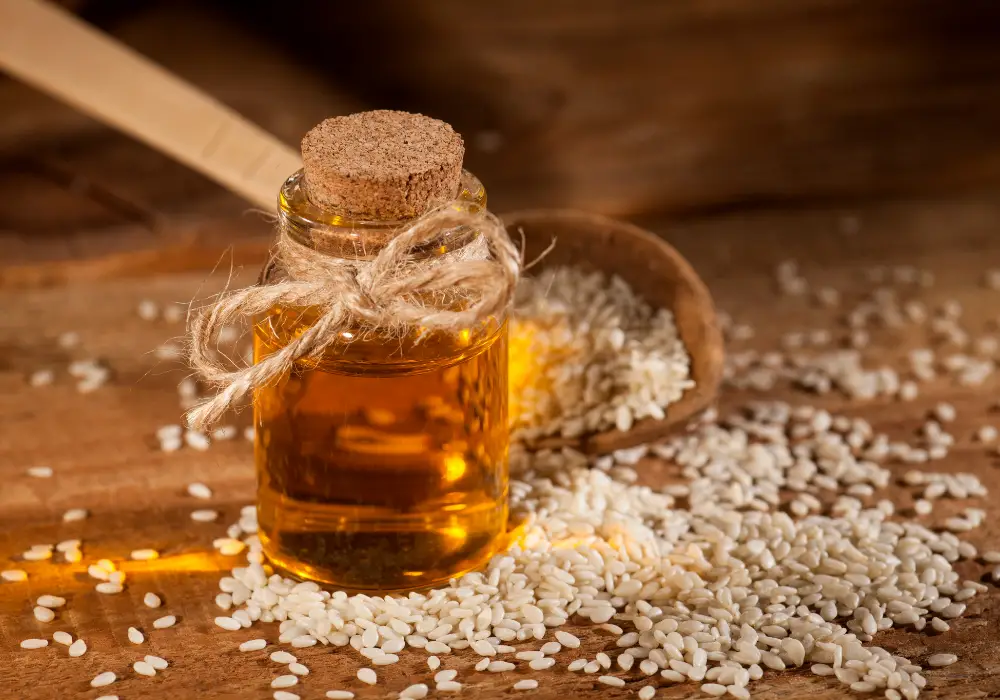How to Store Sesame Oil: Essential Tips for Beauticians?
Sesame oil is a precious ingredient beloved by many in the beauty industry, celebrated for its nourishing properties and versatility. If you're a beautician, chances are you've encountered this oil in various forms, either as part of your skincare regime or as a key ingredient in many beauty treatments. But just as important as knowing how to use sesame oil is understanding how to store sesame oil correctly to retain its quality and benefits.
In this article, we will delve into the various aspects of storing sesame oil, ensuring that its beneficial properties remain intact for as long as possible. By following the tips presented here, you can prolong the life of your sesame oil, allowing you to offer your clients the best possible treatments.

Why Proper Storage of Sesame Oil Matters
Like all oils, sesame oil can degrade over time if not stored properly. Improper storage can lead to rancidity, which affects not only the smell and taste but also the oil's effectiveness. This is particularly crucial for beauticians who use sesame oil in treatments.
To maintain the oil's freshness, you should be aware of several factors, including light exposure, temperature, and container choice. Understanding these key elements is essential in ensuring you harness the full benefits of sesame oil.
1. Choosing the Right Container
The type of container you use can significantly impact the longevity of sesame oil. Ideally, it should be stored in a cool, dark place and in a container that minimizes exposure to light. Dark glass bottles are preferred, as they keep out light and protect the oil from oxidizing.
Moreover, make sure that the container is tightly sealed after each use to prevent air from entering and causing the oil to spoil. Plastic containers should be avoided, as they can leach chemicals into the oil, impacting its quality. For further insights on oil storage, refer to articles on new uses for vegetable oil.
2. The Importance of Temperature
Temperature plays a crucial role in maintaining the quality of sesame oil. The ideal storage temperature is around room temperature, away from heat sources like stoves or sunlight. Extreme temperatures can affect the oil's composition, leading to a decrease in its beneficial properties.
For those working in salons or beauty professionals who buy in bulk, consider storing excess oil in the refrigerator. However, be aware that refrigeration might thicken the oil, so allow it to return to room temperature before use.
3. Avoiding Light Exposure
Light is one of sesame oil's greatest foes. Even brief exposure to bright light can initiate a process called oxidation, which deteriorates the quality of the oil. This is why its important to keep your sesame oil in dark containers and to store it in a dark cupboard or pantry.
In line with this, avoid placing your sesame oil near bright light sources, and if you purchase it in clear bottles, consider transferring it to a darker container.
4. Monitoring Expiry Dates
Like other oils, sesame oil does have a shelf life. Depending on the production methods and packaging, it typically lasts 6 to 12 months after being opened. Therefore, it's vital to keep track of the expiration date to avoid using rancid oil. An easy way to remember to check this is to label your containers with the date of purchase.
To learn more about the longevity of sesame oil, check out this informative article on how long sesame oil lasts.

Tips for Maximizing the Shelf Life of Sesame Oil
To ensure that your sesame oil remains fresh for as long as possible, consider implementing the following tips:
- Store in a cool, dark place: As discussed, a cool, dark cupboard is ideal.
- Use dark glass containers: These help shield the oil from light.
- Avoid using metal or plastic containers: Choose glass or ceramic instead.
- Seal tightly: After every use, ensure the cap is tightly secured.
- Keep away from strong odors: Oils can absorb odors from their environment.
- Check for rancidity: If the oil smells foul or has an off-taste, it's time to dispose of it.
5. Signs That Sesame Oil Has Gone Bad
Recognizing the signs of rancidity in sesame oil is key to ensuring you do not use compromised oil. Here are a few signs to watch for:
- Off smells: If sesame oil smells sour, it's a sign that it's gone bad.
- Change in color: A darker color can indicate spoilage.
- Strange taste: Rancid oil will have a bitter or sour flavor.
It's always best to err on the side of caution. If in doubt, discard the oil.

Integrating Sesame Oil in Beauty Practices
Once youve mastered how to store sesame oil properly, the next step is to explore how to integrate it into your beauty treatments effectively. Sesame oil is rich in antioxidants and has moisturizing properties that make it ideal for skin and hair care.
This oil can help nourish dry skin, improve hair growth, and provide a natural glow to your clients. Check out additional resources on sesame oil uses to harness its benefits effectively in your treatments.
Frequently Asked Questions
1. How long does sesame oil last?
Once opened, sesame oil typically lasts for about 6 to 12 months if stored in a cool, dark place.
2. Can I refrigerate sesame oil?
You can refrigerate sesame oil, but it may thicken. Allow it to come to room temperature before using.
3. What should I do if my sesame oil smells bad?
If your sesame oil smells off or has an unusual taste, it's best to discard it and purchase a new bottle.
As an Amazon Associate, I earn from qualifying purchases.

